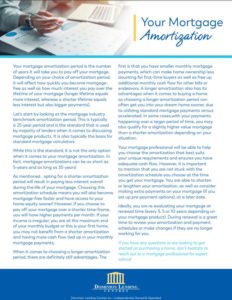If you are a self-employed client who owns your own business, you may have chosen to set that business up as a corporation. This means the business operates as essentially its own person. They have income through business revenue and expenses from marketing costs, materials, office space, etc.
When it comes to getting a mortgage, there are a few benefits to putting that mortgage under the corporation instead of your individual self:
- Corporations tend to pay a lower tax rate than the personal income tax rate and only pay taxes on the net business income.
- When it comes to qualifying for a mortgage, a lender can look at the business income or the personal income they pay themselves.
- Adding the net business income or the personal income from year 1 and year 2 and dividing it by two is the income a lender will associate with that borrower. Keep in mind though this will also be affected if there is more than one shareholder.
There are two ways one can go about this type of corporate mortgage, depending on if the corporation is the operating company or acts as the holding company.
Mortgages and Operating Companies
As with any mortgage, there are considerations and more-so when looking to put your mortgage under your corporate umbrella. While you would essentially qualify as though you’re buying a property in your name, your application will be packaged much differently to the lender. You would be instead qualifying as a corporation with a personal guarantee from yourself.
It is also possible to do a mortgage deal under your personal name but utilize both personal and corporate income. Lenders can do this by looking at both personal T1 generals and respective NOA, plus you can qualify by looking at the Net Business Income before taxes as seen on company financials.
When it comes to getting a mortgage under an operating company (versus a holding company), you may encounter limitations with the lenders that provide this type of deal. You would be looking at an Alt A (B Lender) to finance this particular mortgage, which may come with higher interest rates.
Mortgages and Holding Companies
When it comes to getting a mortgage under a holding company, you will find things are a bit easier. Having a mortgage under a holding company, versus the operating company, essentially removes any limitations or liability from the operating company with regards to the mortgage.
However, to be eligible, you must meet the definition of a Personal Holding Company (PHC) or Personal Investment Company (PIC) per the bank. This is typically considered “a Canadian incorporated entity established by an individual or individuals for the purpose of conducting investment activities, which can include holding real estate, and/or investments. Personal Holding or Investment Companies, and the owner of the PHC or PIC must qualify personally, and sign as covenantor”.
Some additional reasons to consider a mortgage under a corporation or holding company include:
- If your intent is to flip properties rather than hold them as rental revenue, it might make sense to consider holding it through a corporation
- You have retained corporate profit that can be used to buy a property without withdrawing money personally and incurring personal tax.
The most important thing to note when going this route for a mortgage is that ALL DIRECTORS listed on the corporation MUST also be listed on the mortgage application. For a sole proprietorship, this is easy as there is typically only one director, however on larger corporations this is something to consider.
For some individuals, the benefits might not be enough to convince them to put their property under the corporation but for others, it may be the perfect solution.



